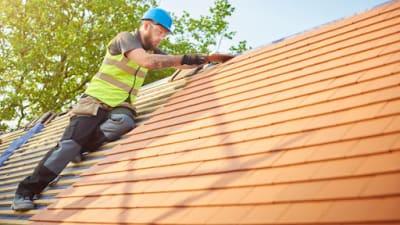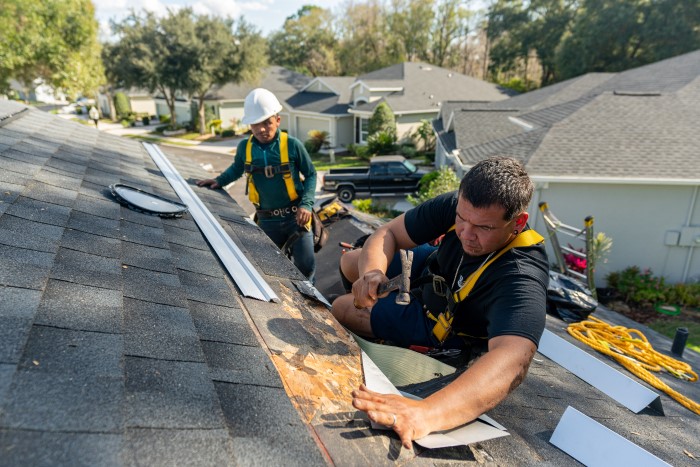Oahu Roofing: Dependable Roofing Solutions for Residences and Companies
Oahu Roofing: Dependable Roofing Solutions for Residences and Companies
Blog Article
Recognizing the Various Kinds of Roofings: A Comprehensive Overview for Homeowners
In the realm of homeownership, selecting the suitable roof covering design is a decision that lugs significant ramifications for both performance and visual appeal. With a range of alternatives-- varying from the conventional gable to the contemporary level-- each kind presents one-of-a-kind benefits and challenges that need to align with the house owner's specific demands and environmental considerations. Understanding these distinctions not just help in making an enlightened selection but also affects lasting maintenance and energy performance. As we explore the complexities of different roofing types, it becomes obvious that one size does not fit all; the right selection might shock you.
Saddleback Roof
Saddleback roofs, identified by their triangular shape, are among one of the most prominent roofing designs because of their simpleness and performance in losing water and snow. This design includes two sloping sides that meet at a ridge, permitting for effective drainage and decreasing the risk of water build-up. The high pitch frequently associated with saddleback roofs enhances their capability to handle hefty precipitation, making them appropriate for numerous climates.
In addition to their useful benefits, saddleback roofs use aesthetic adaptability. They can be adapted to numerous building styles, from conventional to modern homes. The style can also fit added functions such as dormer home windows, which boost natural light and ventilation in the attic room.
Furthermore, saddleback roofs provide sufficient space for insulation, contributing to energy effectiveness. Home owners can pick from a range of roofing products, consisting of asphalt tiles, metal, and tiles, even more boosting modification alternatives.
Despite their advantages, gable roofings might require additional support in areas prone to high winds or hefty snowfall. Generally, the saddleback roof continues to be a popular selection due to its blend of functionality, resilience, and visual appeal.
Flat Roofs
Flat roofs are frequently recognized for their minimal layout and useful applications, particularly in commercial and industrial settings (oahu roofing). These roofings feature a straight or virtually horizontal surface, which permits very easy construction and flexible room application. While they might do not have the visual charm of pitched roofing systems, level roof coverings use numerous benefits, particularly in city environments where maximizing room is vital
One of the key advantages of level roofing systems is their access. House owners can utilize the roofing system space for numerous purposes, such as roof gardens, terraces, or solar panel installations. In addition, flat roofs are normally more economical to preserve and set up contrasted to their sloped counterparts, as they need less products and labor.
However, flat roofs do existing certain challenges. Appropriate water drainage is vital to prevent water merging, which can result in leakages and structural damage. For this reason, choosing top quality waterproofing products and normal evaluations are essential for ensuring durability. Usual materials utilized for level roof coverings include built-up roof covering (BUR), modified bitumen, and single-ply membranes, each offering unique advantages. In general, level roof coverings function as a versatile and practical option for lots of home owners and businesses alike.
Hip Roofings
Hip roof coverings are identified by their sloped sides that merge on top, developing a ridge. This layout stands out from gable roofs, as all four sides of a hip roof covering incline downwards toward the wall surfaces, supplying a much more steady structure. The angle of the inclines can vary, permitting adaptability in architectural looks and performance.
One of the main advantages of hip roofs is their capacity to stand up to heavy winds and unfavorable weather condition conditions. The sloped surface areas make it possible for much better water drain, lowering check my blog the threat of leaks and water damage. In addition, hip roofing systems provide enhanced attic room area, which can be utilized for storage space and even exchanged livable areas.
Nevertheless, building a hip roofing system can be much more complicated and expensive than simpler roofing system kinds, such as gable roofing systems. The extra material and labor associated with developing the slopes and ensuring correct architectural integrity can lead to higher costs. Regardless of these drawbacks, many home owners favor hip roofs for their toughness, aesthetic appeal, and possibility for energy efficiency.
Mansard Roofing Systems
Mansard roofs, usually recognized by their one-of-a-kind four-sided layout, attribute two slopes on each side, with the lower slope being steeper than the top. This building design, originating from France in the 17th century, is not only aesthetically attractive yet functional, as it takes full advantage of the useful room in the upper floorings of a structure. The high reduced incline enables for even more headroom, making it a perfect choice for attics or lofts, which can be exchanged living rooms.
Mansard roofs are characterized by their convenience, suiting different building styles, from traditional to modern. They can be constructed with different materials, including asphalt roof shingles, slate, or metal, supplying homeowners with a series of alternatives to suit their choices and budgets. Furthermore, the layout allows for the integration of dormer home windows, boosting all-natural light and ventilation in the top degrees.
Nevertheless, it is important to take into consideration the possible downsides. Mansard roofs may require more maintenance due to the intricacy of their layout, and their high inclines can be challenging for snow and rainfall overflow. Generally, mansard roof coverings incorporate beauty with practicality, making them a preferred choice among property owners looking for unique architectural attributes.
Dropped Roofs
As home owners increasingly seek simplicity and functionality in their architectural styles, shed roofings have become a popular choice. Defined read this article by a solitary sloping aircraft, a shed roof offers a minimalist visual that matches various home styles, from modern to rustic.
Among the primary benefits of a shed roofing system is its uncomplicated construction, which usually converts to lower labor and product expenses. This style allows for efficient water drain, lowering the danger of leaks and water damage. In addition, the vertical incline gives ample area for skylights, enhancing all-natural light within the inside.
Dropped roofs additionally use flexibility in terms of use. They can be efficiently incorporated into additions, garages, or exterior frameworks like sheds and pavilions. In addition, this roof design can suit different roof covering materials, consisting of metal, asphalt shingles, or even eco-friendly roofing systems, aligning with environment-friendly efforts.
Nonetheless, it is important to think about regional environment problems, as heavy snow tons might require changes to the roofing's angle or structure. In general, lost roofs offer a functional and cosmetically pleasing option for home owners wanting to optimize functionality without compromising design.
Conclusion


Gable roofing systems, defined by their triangular form, are amongst the most prominent roof covering designs due to their simplicity and effectiveness in dropping water and snow. oahu roofing. The high pitch frequently connected with gable roofs boosts their capability to deal with hefty rainfall, making them appropriate for numerous climates
While they may do not have the aesthetic appeal of pitched roofs, flat roof coverings provide many advantages, particularly in metropolitan environments where optimizing area is critical.

Report this page